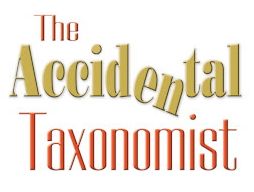This week I attended the second annual conference “SemanticData: Taxonomy, Ontology, and Knowledge Graphs,” hosted by Henry Stewart (HS)
Events and co-located with the HS DAM (Digital Asset Management) conference. I
found this conference to be very worthwhile to attend, even without presenting,
for its networking opportunities and ideas shared. As a one-day one-track-only
conference, it had only 12 speakers, so I was not a speaker again this year, as
I was last year, in order to let others speak.
Ideas of Semantics
Semantic data means enriching data with meaning from
controlled vocabularies, especially taxonomies, and with meaningful
relationships and specific attributes, provided by ontologies. Taxonomies and
ontologies are referred to then as “semantic models.” A knowledge graph is a
semantic model plus all of the connected data, which is stored in a graph
database.
How “semantics” was discussed was up to each speaker.
Jessica Talisman gave an overview of semantic models in what she describes as
the "semantic pipeline.” In his talk on information ethics, Gary Carlson
stayed high-level, stating “Semantics is about moving information from one
place to another.” By contrast, Ashleigh Faith focused on the practical
application of semantic tags to benefit AI. In his keynote, Ahren Lehnart spoke
of the need to trust semantic models and concluded by focusing on the people,
listing what “semantic professionals” do, including driving semantic adoptions
within an organization, engaging with subject matter experts, seeking out and
staying involved in AI projects, targeting high-risk semantic cases, and
designing transparency into semantic models.
Turning to practice, Melissa Knudtson Monsalve explained the
adoption of “just enough semantics” as a solution for organizations facing
challenges of implementing semantic models. The conference also had some
interesting case studies. Laura Rodriguez spoke about taxonomy governance
strategies undertaken at HealthStream. Tracy Forzaglia explained the use of
taxonomy and tagging at Scholastic. Mindy Carner explained the implementation
of the DITA structured content standard in conjunction with a controlled vocabulary
to manage and deliver Help Center content at LinkedIn. Finally, Dr. Robert Sanderson explained and demonstrated Yale’s LUX Collections Discovery utilizing
a cultural heritage ontology and knowledge graph.
Comparisons with Semantic Data 2024
I had blogged about the first conference, Semantic Data 2024, last year. The format was the same: Individual half-hour presentations, the first as a
“keynote”, a participant discussion activity, and a panel discussion moderated
by the chair. By comparison, the conference was larger this year, up from about
50 attendees to about 70, making the room quite full. Aside from the chair and
two of the sponsors, all but one of the speakers were also different this year
from last.
Madi Weland Solomon was again the conference chair and
moderator, and Factor and Datavid were again sponsors with sponsored talks that
were not promotional. Gary Carlson of Factor presented on the importance of
data quality in semantic architecture, and Tim Padilla of Datavid presented on
the AI-readiness of enterprise data. Progress Software was a new sponsor, but
instead of a sponsored talk, Jim Morris of Progress spoke on the closing panel.
Panel: Solomon, Morris, Sanderson, and FaithThe theme of AI (especially generative AI and LLMs) was
somewhat more prominent in the conference this year, taken up in almost half of
the sessions. Ashleigh Faith’s talk, “How Semantic Tags Benefit AI,” was
especially practical and informative. AI was woven through Ahren Lehnart’s
opening keynote, when he discussed semantic trends and predictions. Tracy
Forzaglia’s case study was about tagging with AI. Finally, the closing panel
discussion had a focus on AI this time even in its title “Semantic Architects
vs. AI: Who Curates the Future?” In fact, the conference could be title:
“Semantic Data: Taxonomy, Ontology, Knowledge Graphs, and AI.” The importance
of “human in the loop” with regard to AI and semantic automation was
emphasized.
The “roundtable” group discussion members addressed
questions of their organization’s semantic maturity, important changes in the
past year, and what topics they would like to have addressed next year. This
proved to be a popular session, although the large number of attendees required
more time than allotted, and the room did not have tables. Perhaps a larger
room or two tracks will be needed next year. I hope to participate next
fall, if my schedule allows. Meanwhile, those of you in Europe may attend
Semantic Data Europe on June 25, 2026, in London.
